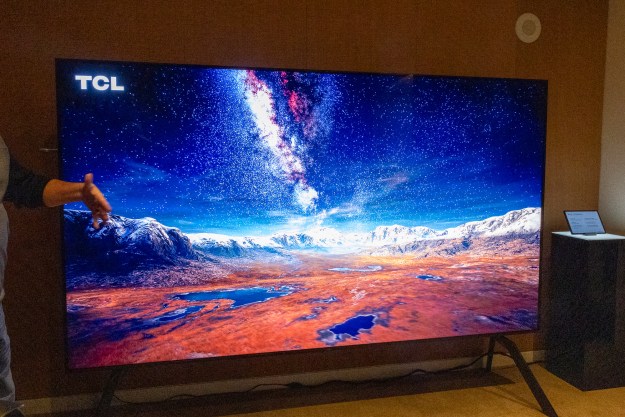While the majority of the video industry has been focusing on perfecting the increasingly dense pixel resolution of 4K technology (a.k.a ultra high definition, or UHD), the folks at Dolby Labs have been wrestling with a much more fundamental question: “Is your TV bright enough?” A recent blog from Mike Rockwell, Executive VP of Dolby’s advanced technology group, details how the company that invented hi-fidelity sound plans to do the same for television by creating brilliantly vivid images that are similar to what we see in the natural world.
Working on research about basic human visual perception, as well as a study to find out how bright the majority of users (90 percent) actually want their TVs to be, Dolby has created a liquid cooled “super TV” that douses viewers with up to 20,000 nits of light, or about the equivalent of looking at a 100 watt light bulb. This near-nuclear burst of eye-scorching luminance is around 200 times brighter than the industry standard. So how can it be considered palatable, or even tolerable? Contrast, of course.
Using rich contrast between shades of light and dark, only tiny fractions of the whitest light on Dolby’s new display reach those dazzling levels of brightness, creating a contrast level up to 10,000:1 in the brightest scenes, and 10,000:1 in the darkest. Rockwell explains that the combination of the super darks and whites form an overall contrast ratio of “100,000:1 or more,” creating a level of clarity that blurs the lines between the on-screen images and the real world. Rockwell goes so far as to claim that looking at the display is like looking through a window.
What this all means for your living room set in the near future is unclear, at present. But Dolby’s first “super TV” appears to be just the lead-in. A report from the Wall Street Journal details an eyes-on look at one of Dolby’s new LED prototypes, which the company has been showing off around the industry from TV manufacturers to Hollywood studios. The prototype reaches a slightly less astonishing brightness of 4,000 nits, but even so, the demonstration appears to have made it clear that Dolby has got some lightning in its new bottle. And since Dolby has yet to name its new technology, we’re sticking with its own “super TV” moniker for the prototypes as well.
With CES coming up in less than a month, it’s not much of a leap to guess that one of Dolby’s new ultra-bright TVs will be making an appearance. In fact, the WSJ reveals some tantalizing hints from Dolby about unnamed manufacturers that will be revealing their own displays at the show utilizing the sparkling new technology. While no names have been dropped, if the past is any implication, you can bet on Samsung, LG, and Sony as top candidates.
If last year’s CES was the year of the 4K TV, and to a slightly lesser extent, OLED, could this year’s conference be the year of Dolby’s brilliantly bright “super TV?” Time will tell, but we don’t mind admitting, we’re pretty excited to find out how vividly these TVs shine for ourselves. Stay tuned over the next few weeks as we learn more, and stick with us at CES 2014 for coverage of this, and reams of other crazy technology that will be invading your home in the future.
Editors' Recommendations
- Amazon Prime Video makes Dolby Vision, Atmos a paid upgrade
- How to set up your TV for Super Bowl Sunday
- You can now make your own AI art with Amazon Fire TV
- First look: Telly’s free TV just might be able to pull this off
- Music might not bootstrap NextGen TV and ATSC 3.0, but Roxi at least tries to make it fun


